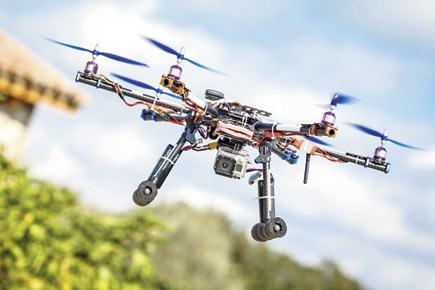Unmanned aerial vehicles or drones will soon fly over India's forests to monitor poaching, track wildlife and even count the population of tigers

Kolkata: Unmanned aerial vehicles or drones will soon fly over India's forests to monitor poaching, track wildlife and even count the population of tigers.
ADVERTISEMENT

Representational Pic
Scientists at the Wildlife Institute of India (WII) are coming up with a series of such drones which are being customised indigenously to suit different types of forest landscape.
"With this we will move on to the second generation technology for monitoring and surveillance of wildlife. They will be cost-effective and can reach areas where it is difficult for humans to enter," WII's wildlife scientist K Ramesh, in-charge of the project, told PTI from Dehradun.
Under a joint collaboration with the National Tiger Conservation Authority (NTCA) and international environment body WWF, they are preparing a detailed project report for introducing drone monitoring in 10 wildlife-rich areas across the country.
The primary objectives of these drones would be to track the movements of wildlife and monitor poaching. "They may also be used in counting the population of animals like tiger," Ramesh said, adding that in many areas camera trap method for counting of tigers had not proved to be effective.
Shekhar Kumar Niraj, head of wildlife trade monitoring network TRAFFIC, said this would be a useful hi-tech tool in the hands of ill-equipped forest guards. "It can be particularly useful in monitoring poaching of lesser known species. But drone technology can only detect poaching and so it should be backed by on-ground staff monitoring," he said.
A drone can be put on autopilot mode and sent as far as 40-50 km deep into the forest where it can record images and videos and transmit them on a realtime basis. Its movement can also be controlled through a GPS-based system. Such drones were recently tested successfully in Panna Tiger Reserve and Kaziranga forest. "We have now learnt how to fly these drones into the forest by means of demonstration and test-flying.
Some nations like Africa have started doing this but ours would take this to a new level," Ramesh said. Drones can also be used for night surveillance and tracking of many elusive and shy animals like the red panda and snow leopard, which are very rarely seen by the human eye in their natural wild habitat.
Travelling at a speed of 40 km per hour, the drones can be used for around 40-50 minutes. They can be brought back to the base station, recharged, and sent back several times in a day. "We are also working on a new drone model which can go as fast as 100 km per hour," the scientist said. "They are cheap. Each such unit will cost only Rs 3-6 lakh and there are no recurring costs. The batteries are easily recharged," he said.
They have identified ten places in the country where this drone monitoring project would be implemented from 2015 - high-altitude Himalayas, Himalayan foothills, central India, coastal regions of Sundarbans, islands of Andaman, etc. "We will develop specialised drones for each of these terrains. After our demonstration is over we will train forest department staff to handle these drones," he said, adding that they would also need clearances from the Ministry of Defence.
 Subscribe today by clicking the link and stay updated with the latest news!" Click here!
Subscribe today by clicking the link and stay updated with the latest news!" Click here!






